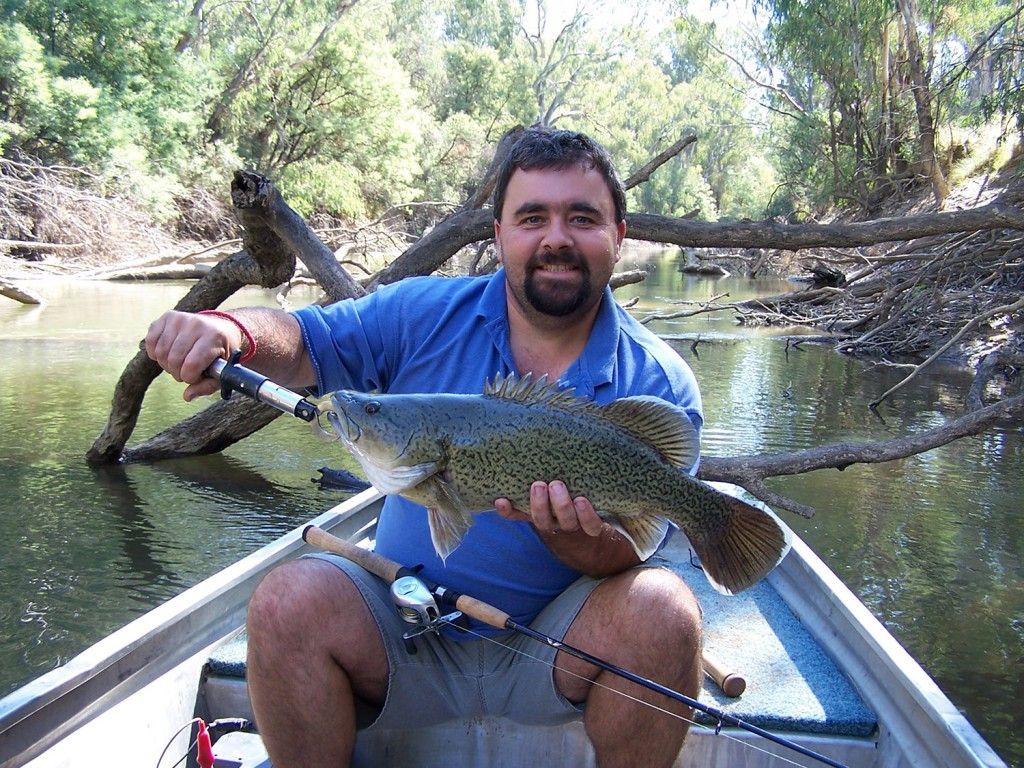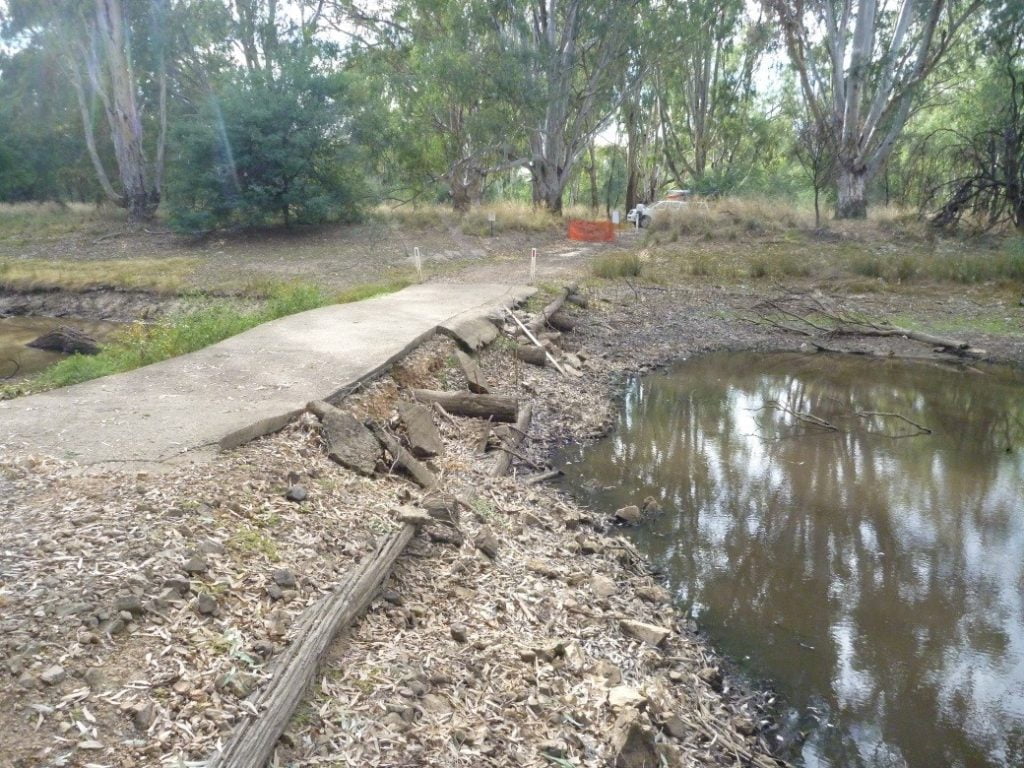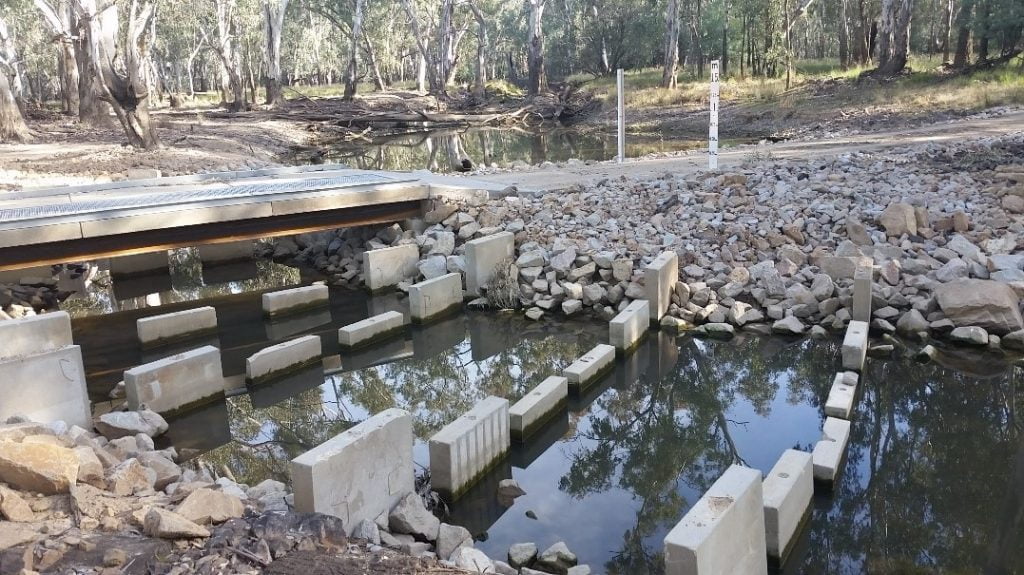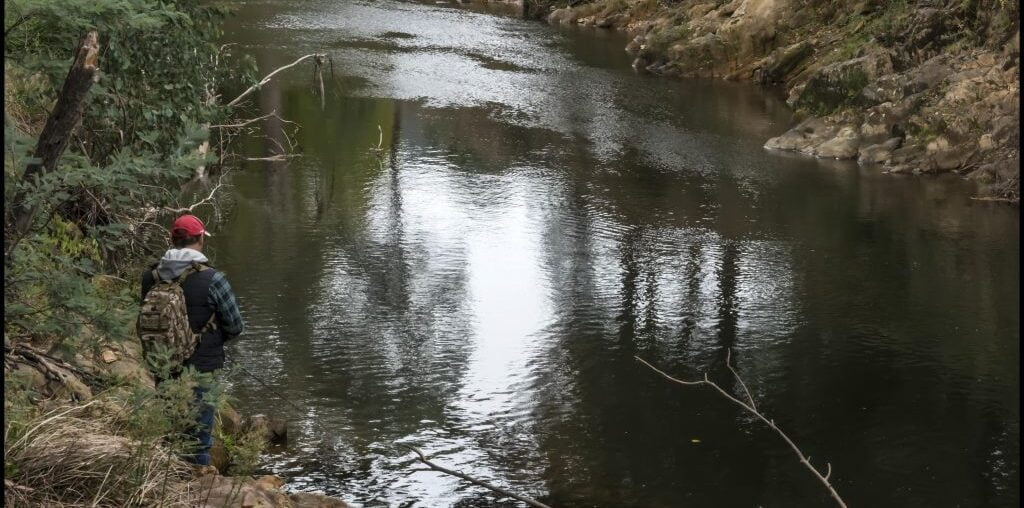Victoria’s Ovens River is one of two significant rivers in the Murray-Darling Basin that remains unregulated, as well as being the only major floodplain in the southern Basin with a natural flooding and drying regime. As a result, the Lower Ovens effectively takes care of itself while contributing clean, filtered water to the Murray River, and its extensive network of wetlands that offer a safe nursery for many native fish species.
High flows that come down the Ovens River, usually in winter and spring, spill out onto floodplain, filling a network of some 1,800 wetlands and providing essential nursery habitat for fish, including Murray cod, Golden perch and Silver perch.

Much of the Lower Ovens Floodplain is contained in the Warby-Ovens National Park which allows the floodplain to freely flood as it does not impact on human infrastructure like towns, or agricultural land. Threre are three key reasons the Lower Ovens is so special and needs to be protected:
- Flooding
- Safe breeding ground for wildlife
- Assisting water quality in the Murray River
1. Flooding
Some native fish and birds rely on flooding for spawning and breeding events. The Lower Ovens floodplain naturally offers ‘flow cues’ to native fish and birds for spawning and breeding events.
Larger water storages on a river have the potential to stop flooding downstream, and often reverse the seasonality of the natural flow regime. For example, the Murray River has high summer flows to supply commercial and urban water users downstream, and low winter flows when Lake Hume and Dartmouth Dam are ‘storing’ water. This regime has reversed the natural flows of the river system, which has negatively impacted on the natural ecosystem, native plants and animals, and particularly some native fish and birds that rely on ‘flow cues’ for spawning and breeding events.
The Lower Ovens River does not face this challenge due to it’s unregulated nature, making it an ideal location for fish breeding and as a fish nursery habitat.

2. Safe breeding ground for wildlife
Aside from providing habitat for fish, the annual rhythm of natural flooding and drying creates a nursery environment for birds, turtles, crustaceans, mussels, and fauna, as well as plant life.
The forests and woodlands of the Lower Ovens floodplain provide important habitat for threatened fauna species such as the Barking Owl, Powerful Owl, Turquiose Parrot, Swift Parrot, Grey-crowned Babbler, Painted Honeyeater, Regent Honeyeater, Apostle-bird, Squirrel Glider, and the Bush Stone-curlew. The Great Egret also has colonial nests in the swamps and wetlands.

A rich bat community relies on the dead trees on the floodplain, including the large-footed Myotis, one of only two Australian “fishing” bats that feeds by trawling its specially adapted feet along the water’s surface to catch aquatic invertebrates and fish.

The Ovens River and its wetlands also provide habitat for three species of tortoise. Along with this, open River Red Gum forest and an intact understorey of River Bottlebrush, Silver Wattle and Rough-barked Honey Myrtle and native grasslands, provide an important continuous habitat corridor and habitat for many significant native animals.
3. Protecting water quality in the Murray
Flooding in the Lower Ovens floodplain extends the benefits into the Murray system as well. Organic matter entrained (moved) from the Lower Ovens floodplain provides a critical carbon supply for food webs and primary productivity within the Ovens River and the Murray system. When there is regular flooding of the floodplain the amount of leaf litter build up is reduced which also reduces the chance of a blackwater event after a big flood.
Caring for the Lower Ovens
The lower Ovens River floodplain provides a vital link between floodplain wetland condition, hydrology, ecology, and river/floodplain/wetland connectivity. Much is being done to care for this remarkable area and better understand its value. A study commissioned by the North East CMA showed that 96% of wetlands are inundated on average every three years. Read more here. Through this study a number of crossings and other barriers to flow were identified through aerial mapping and flow modelling. One example was Frosts Crossing Track within the Warby-Ovens National Park which was rebuilt to provide connectivity at times of low flow within the floodplain, but still allow access into the Park.


There are still issues to manage, including: vegetation clearance, pest species, the operation of the Murray River and backwatering from Lake Mulwala, and the construction of levees, channel banks and roads that disconnect wetlands from the river.
Like to know more?
You can access further information on the Lower Ovens Floodplain within this Discussion Paper, the MDBA website and the Lower Ovens Floodplain webpage on the North-east Central Catchment Management Authority website.



